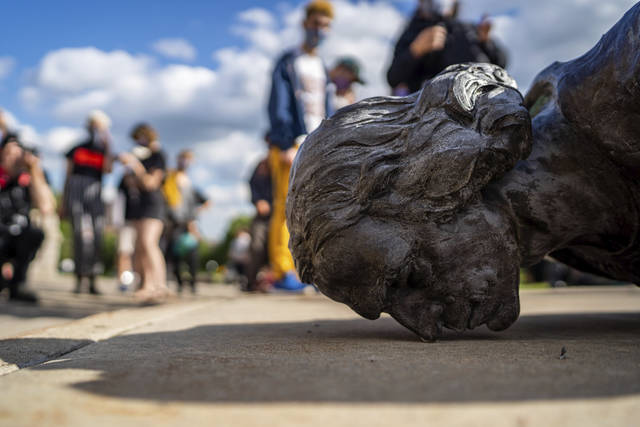So you and some friends find yourselves about to bring down that Confederate statue in the center of town.
But you don’t want anyone to get hurt, right? How’s a protester to stay safe?
Well, Popular Mechanics figured they’d weigh in on the issue, offering a how-to guide for eager topplers.
“We asked scientists for the best, safest ways to bring it to the ground without anyone getting hurt,” writer James Stout says in the article, “except, of course, for the inanimate racist who’s been dead for a century anyway.”
The guide gives readers two options — pulling it down physically or using chemicals to melt it from its perch.
With regard to the former, mechanical engineer Scott Holland points out that the force needed to pull down a statue isn’t as great as one would think.
Holland says most statues of people are bronze and top out at about 3,500 pounds; those with horses are about 7,000 pounds. He calculates that one person could likely provide about 100 pounds of pulling force. However, Holland suggests doubling the force needed, which means you’d better round up about 70 friends with some good muscles to bring down your average statue.
Of course, Stout recommends everyone use caution: “Just make sure you use the proper protective equipment and look to see that nobody is underneath the statue when it falls. That means using a long rope to make sure the first person on the rope is farther away from the statue than the statue is tall.” (The article provides a handy Pythagorean triangle calculator to figure it all out.)
If you’d rather use chemicals to bring your racist statue down, Chris Harrison, a chemistry professor at San Diego State University, suggests using a “thermite reaction” packed around the statue’s feet or ankles, which is basically what is supporting everything above it.
Of course, not everyone is happy that the publication shared such details.
I look forward to Popular Mechanics putting together a primer on how to make a Molotov cocktail https://t.co/Re2VkHeJSN
— Ben Shapiro (@benshapiro) June 17, 2020
That’s disappointing Popular Mechanics was one of my favorite magazines growing up.
— Dood (@KingDood) June 17, 2020
Can they be held accountable for supporting riots, vandalism, and destruction of both public and private property?
— Joshua Ingram (@joshuaringram) June 17, 2020








